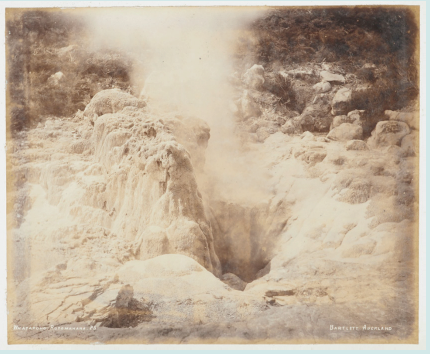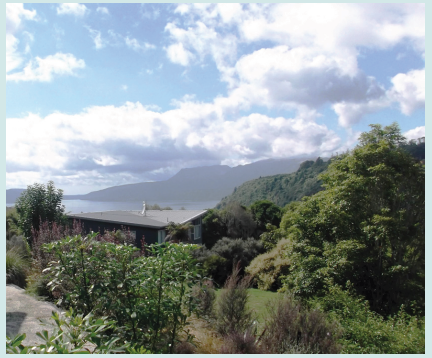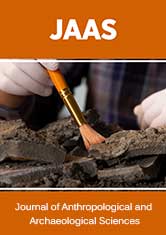
Lupine Publishers Group
Lupine Publishers
Menu
ISSN: 2690-5752
Research Article(ISSN: 2690-5752) 
Flames at the Pink and White Terraces: The Cold Case of Edwin Bainbridge Volume 8 - Issue 3
A Rex Bunn*
Independent Researcher, Australia
Received: July 08, 2023; Published: July 14, 2023
Corresponding author: A Rex Bunn, Independent Researcher, Australia
DOI: 10.32474/JAAS.2023.08.000288
Abstract
This research examines the historical record of the 1886 Tarawera eruption in New Zealand and the Pink and White Terraces, into the death of the only English tourist killed in the eruption, Mr Edwin Bainbridge. While his immediate cause of death is accepted as accidental i.e. being crushed by a falling balcony: the proximate cause i.e. hydrogen sulfide (H2S) poisoning from Whatapoho fumarole was misdiagnosed at the time as alcohol intoxication. This proximate cause was concealed at the time in 1886, probably to ease his family’s distress in the United Kingdom and to protect the publican involved, from criticism or liability. A Dying Declaration made fifty−one years later is analysed together with firsthand evidence from Bainbridge’s tourist guide, who also became ill. It is suggested the H2S inhalation later impeded Bainbridge’s ability to dodge the falling balcony, which the person beside him survived. Bainbridge’s teetotal belief was overlooked at the time. This research now corrects the historical record.
Keywords: Taupō volcanic zone; tarawera eruption; hydrogen sulfide poisoning; autoignition; whatapoho
Research Article
This article stems from long-term research into the Pink and White Terraces, the lost Eighth Wonder of the World in New Zealand. A report in the historical record and a retraction by an eyewitness: help resolve the cold case death of Edwin Bainbridge, the only international tourist killed by the 1886 Tarawera eruption.
Method
This forensic research examines and reconstructs the volcanic eruption as it engulfed the township of Te Wairoa, New Zealand on the night of June 9−10, 1886. Published accounts, patient interviews, diaries and a Dying Declaration are assembled. Site visits were made to Te Wairoa. The author has published extensively on the Tarawera eruption’s impact upon the lost Eighth Wonder of the World – the Pink and White Terraces of the Taupō Volcanic Zone [1].
Results
Flames at Whatapoho
The renowned tourist Guide Sophia Hinerangi (1832–1911), reported on her final visit to the Pink and White Terraces with an English tourist Edwin Bainbridge (1866−1886): that the two witnessed a fumarole Whatapoho (translated as pain in the stomach) emitting flames and smoke [2]. This is the only report of pre-eruption surficial combustion at the Rotomahana Basin in 1886. It is significant for volcanic gases are generally non-flammable: largely composed of H2O and CO2. The flammable gas produced by fumaroles in the Rotorua region is hydrogen sulfide (H2S): toxic to mammalian and plant life. Such an event might lead geoscientists to consider an imminent eruption, but in 1886 there were none present. Sophia Hinerangi (aka Te Paea) had a Scots father and was christened Mary Sophia Gray in 1839. She was educated in Auckland and by 1870 was married to Hori Taiawhio (1901) and living at Te Wairoa, where she became the internationally famous “Guide Sophia” to the Pink and White Terraces. She was a striking individual, bilingual and an able companion and guide to the wealthy tourists visiting from the northern hemisphere. Her papers show she was a keen observer with leadership qualities. She was timely as a tourist guide and her eruption account provides the best chronology.
The possible causes of the combustion Sophia and Bainbridge observed on Tuesday 8 June 1886 include a bushfire, dropped cigarette, spontaneous combustion or rising magma. We can exclude a bushfire or cigarette butt as Ferdinand Hochstetter (1829−1884) reported vegetation around Whatapoho was withered as in Figure 1 and the adjacent ground was covered in siliceous sinter. Neither Sophia nor Bainbridge appears to have smoked. The georeferenced location of Whatapoho places it too far south to be a contender for the initial Rotomahana Basin eruption [3]. However, Nairn noted ‘a continuous basaltic dike at depth beneath Rotomahana and suggest[s] that magmatic energy may have contributed to the1886 Rotomahana explosions’ [4]. Thus, it is unsurprising for Whatapoho to rise in temperature, with an increased hydrogen sulfide emission, leading to autoignition on/about June 8. Also, it was one of three neighbouring features where the others i.e. Koingo and Ngawhana were said to be connected. These features lay in gullies above the deserted settlement of Ngawhana. Any heavy, noxious gases e.g. H2S or CO2 would flow down through Ngawhana-suggesting a possible motive for the Tūhourangi tribe’s relocation to Puai and Pukura Islands. The U.S. Geological Service notes: ‘The boundary between healthy air and lethal gas can be extremely sharp; even a single step upslope may be adequate to escape death’ [5].
Edwin Bainbridge
The historical record has paeans for the sole English guest in Te Wairoa, Edwin Bainbridge age 20; who was in New Zealand for 15 days, arriving in Te Wairoa on Sunday, June 6. No records refer to any illness save depression due to his recent bereavement. His diary (completed in Te Wairoa on June 9) ends on June 5 when he was in good health. The person best placed to note any ill health was Joseph McRae (1849−1938), Bainbridge’s hotelier at Te Wairoa. In his writings from the time, there is no mention of illness, (only a shared prescience of death during the eruption). McRae and other writers (Darlington, Moulton, MacArthur, Waldegrave, Forrest and Minett et al.) who later expressed condolences to Bainbridge’s UK family; praised Bainbridge for his conduct during the eruption [2]. These character pieces may reflect a cultural cringe toward wealthy English visitors [6]. He was an educated and personable, Christian young man. The trip to New Zealand was fashionable for young English gentlemen. In his memoir, Bainbridge records joining the blue ribbon Temperance movement in 1882 and was teetotal in 1886 [2]. He stayed at McRae’s licensed Rotomahana Hotel and not at the Temperance Hotel, as he was referred by a school alumnus J. P. McArthur, who knew McRae and arranged for the two to shoot pheasants [7].
Eruption Week at Te Wairoa, June 1886
The Whatapoho visit by Sophia and Bainbridge was on Tuesday, June 8; though dates are confused by some witnesses; possibly counting back from eruption night. Also, it’s unlikely there was a chronometer in the village, or that the watches and clocks at Te Wairoa were calibrated. By cross-referencing eyewitness accounts and the eruption timeline by Ian Nairn [4]; it’s possible to assemble a timeline for that week and the night of June 9−10 at Te Wairoa. This is important when considering the 1886 statements attributed to Joseph McRae; against those he made fifty-one years later, retracting his account of Bainbridge’s death [7,8]. It is germane that Bainbridge and Sophia were Temperance activists. Sophia was also an anti-smoking campaigner.
Tuesday, June 8
Sophia takes Bainbridge to the terraces. They see Whatapoho on fire and Sophia reports seiches (waves) in Lake Tarawera. She also reports an elevated water level in Lake Rotomahana, using the reeds as a datum─ the same reeds used in 2017 to construct a bathymetry of the old lake [9]. She reports these events to McRae who derides her report and accuses her of scaring tourists.
Wednesday, June 9
Morning─ Guide Sophia may have insomnia, rising at 4.30 AM (before dawn in winter) to do her washing in the creek until 6 AM. It would have been 4-6°C up on the plateau. Her husband thinks she is ill. She washes all the blankets and has none dry for her bed. Bainbridge also rises early and was worried about her. He visits her home at 7.30 AM. She was ill abed after their tour the day before. Bainbridge returned to the hotel and brought her a hot drink.
a. Day- Bainbridge and McRae go shooting. Sophia sends her three children to their brother’s house. She stays in bed all day.
b. Night- Sophia arises at 5 PM, does some sewing and returns to bed at 11.30 PM: to be disturbed by earthquakes. Bainbridge spends time with others cleaning their guns and retires at 11 PM. At midnight, McRae visits his room to reassure him about the quakes.
Thursday, June 10
Midnight to dawn- Between 11.30 PM-12.30 AM the quakes worsen. Sophia goes to her brother’s house and retrieves her children. She finds 10-12 refugees sheltering on her return. Through that night ≤50 more (some naked) arrive for shelter.
At 2 AM, we take up Darlington’s synthesis of events at the Rotomahana Hotel. Earthquakes are worsening and people are shaken awake to find possessions spilled onto the floor. Te Wairoa sits in a valley, with no horizonal view. The Tarawera massif can be seen by climbing the valley wall as in Figure 2. The Rotomahana Basin cannot be seen. ‘About two o’clock [Nairn says ~1.30 AM] there was a violent shock, and then a most tremendous roar, as the whole top of the Tarawera [Wahanga] was blown to pieces. McRae ran to his room, and said,” Get up and dress at once, Mr Bainbridge”. He was already getting dressed, and replied, “All right, McRae”.’ The two maid-servants rushed out of their rooms, but McRae persuaded them to go back and dress. When this was done, they all went out of the hotel to some high ground some three hundred yards off [in fact 0.5 km], where an old Maori Mission Station used to be [Spencer’s church at Te Mu] [7]. Their vantage point looked directly at the erupting Wahanga peak as in Figure 2. There were some twelve people.
‘Here they stayed for about half an hour looking across Lake Tarawera, and watching what I suppose must have been one of the most glorious spectacles ever seen by mortal man-a mountain that had been quiescent for hundreds of years suddenly bursting forth into violent eruption. Tarawera Mountain was about ten miles away [in fact 14 km to Wahanga and 12 km to Tarawera]…‘ [7]. Their stay on the ridge was ~2.45 AM−3.15 AM. This allows for dressing, assembly and the walk of ~0.5 km: 10−15 minutes in the dark, (although Sophia reports: ‘It was as light as day-yes, lady, almost like the sun that is now shining on us. The light came from the crater.’ [2]. She could not see the Tarawera peaks from her home. The glare from the massif or Rotomahana-Rotomakariri crater reflected down to her home.
By 2.30 AM basaltic scoria (magma or lava bombs) were erupting from Wahanga, Ruawahia and Tarawera peaks [4]. The hotel party noted ‘dust’ falls and returned to the hotel, in time to experience red-hot bombs striking the building. Soon after, the Rotomahana mud began falling on the site. This would be ~3.30 AM. Nairn reports an explosion at Waimangu at 2.30 AM (likely from Echo Crater and/or Black Crater) and explosions at Rotomahana from 3.20 AM~5.30 AM. Waimangu did not exist before 1886. The area was known as Okaro and was rarely visited.
‘Much incandescent ejecta was observed above Tarawera during the eruption, but not at Rotomahana where the eruption clouds were not lit by glare, suggesting that no incandescent lava reached the surface there…’ [4]. They are contradicted by the villagers reporting burning projectiles smashing windows and starting fires, and it being like daylight [2,7]. When Tarawera and then Waimangu-Rotomahana ejecta began falling on Te Wairoa, McRae and Bainbridge et al returned to the hotel at about 3.30 AM. Sometime later, in the Smoking Room (Sitting Room), Bainbridge delivered a sermon and led the party in prayer, before completing his diary: ‘this is the most awful moment of my life. I cannot tell when I may be called upon to meet my God. I am thankful that I find his strength sufficient for me. We are under heavy falls of volcanoe [sic]...’ [7].
At this time, they saw the nearby Haszard house and another catch fire and collapse, killing some occupants. At the hotel, the accounts become harder to synthesize. The party gathered in the Dining and Smoking Rooms where McRae tried to serve cocoa. This failed as the stove would not heat (probably due to a chimney blockage) and he served whisky and port. It is possible a waiter served a tumbler to Bainbridge but after preaching a sermon and writing a final note with religious faith sustaining him; I doubt Bainbridge broke his pledge. Next, at about 4 AM (one account says 4.30 AM) the roof and upper story collapsed onto the lower story. The main hotel roof was of hipped, galvanised iron construction. At the left rear was another hipped roof, possibly over the kitchen and abutting the main structure. This formed a butterfly roof with a box gutter. The rooves had no other guttering. Ash would accumulate in the well between these two rooves and it is unsurprising the collapse started here, over the kitchen and next, the rear dining room. Ash would also have accumulated on the roof behind the facade parapet, which survived. The balcony and roof were fixed to the upper story joists, probably via waler beams and ash would have lodged along the balcony deck and the skillion roof above it. This together with the earthquakes would weaken the verandah structure and contribute to its collapse. The masonry damage to the central chimney was probably due to earthquake movement (personal communication Lachlan Campbell 5 December.2022). The post-eruption accounts cover the roof collapse and evacuation of the Dining and Smoking Rooms with the party moving to the Drawing Room (via the verandah). It was probably soon after 4 AM. The party then began to lose cohesion, sheltering possibly in a hallway or outside onto the verandah; before covering their heads and fleeing.
Bainbridge is said to have been third to exit the hotel, behind the proprietors of the Temperance Hotel with McRae fourth. Bainbridge was reported killed by a falling balcony. The rest of the party evacuated the building; exiting the western verandah via a gate and walking to Sophia’s home. The darkness was relieved by flaming bombs. The hotel facade and some walls survived. Sections of the verandah were clear of debris in later photographs, as in Figure 3. Given the drama, the eyewitness timeline becomes unstated. The death of Bainbridge probably occurred at 4−4.30 AM by these accounts, with the hotel evacuated by 4.30 AM and certainly before 5 AM as the Rotomahana eruptions ended by 5.30 AM.
Figure 3: McRae’s Rotomahana Hotel following the eruption. The figure on the far end of the verandah is where the occupants would have left for Sophia’s house (Te Papa MA1043618).
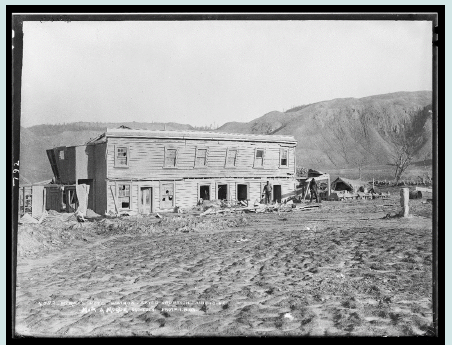
Inconsistencies in the historical record
There are inconsistencies in the reporting of events that night, particularly in the hours before dawn. These include:
a. The hotel windows smashed when the party returned. A Burton print (1/2-020459-F) shows no missing panes from the six upstairs front windows. Two are open. Minor damage is seen on the left ground-floor window. Figure 3 shows more posteruption window damage on both storeys─ possible evidence of salvage, vandalism or looting. Tarawera or Rotomahana ejecta could not have struck the facade before the building collapsed, due to its orientation. The Temperance Hotel faced northeast and bombs broke the front windows there.
b. The mud in the village was described as up to five or six feet deep. The average depth was really about one foot (300 mm). Deeper mud collected against some walls.
c. McRae was reportedly knocked down and/or out four times while searching for survivors. From his later 1937 statement, this happened once. He was awarded a St John’s gold medal for his efforts.
d. Sophia’s house was reported as 700 yards (640 m) from the hotel. From the subdivision plans held by Cheal Consultants and photography: it was just 100 yards (91 m).
e. Why McRae elected to evacuate to Sophia’s house is puzzling. A similar where lay 10−20 m from the verandah the party exited. It survived as did other Maori houses as in Figure 3.
Edwin Bainbridge drunk?
In 2018, historian Michelle Smith noted Bainbridge was reportedly intoxicated and had to be put to bed by McRae at 11 PM that night. At 2 AM, he had to be roused and dressed by McRae to rejoin the group: ‘Wednesday night … Edwin Bainbridge partook of his host’s congeniality. McRae ended up assisting his guest to his chamber tucking him into his bed and probably chuckling to himself that there would be another sore head in the morning ... Some locals, such as McRae left their homes to watch the wondrous sight…. Even Bainbridge, whom McRae had to assist with dressing, managed to make his way up the hill to watch’ [10].
Given Bainbridge’s Temperance history and his local connection with school alumni in communication with his UK family; this seems unlikely even where he faced death. He attended church in Auckland and a Temperance meeting addressed by the ‘Hon. G. Waldegrave, a young man who spoke at a temperance meeting at The Leys [Bainbridge’s school] some years ago, after which meeting, I signed the pledge’ [7]. Had Bainbridge consumed alcohol, his family and school alumni would have learned of it. On the other hand, McRae as a hotel licensee, experienced wealthy young English guests, becoming inebriated and enjoying the tourist entertainment described by Talbot: ‘Excited by rum and pakeha approval, the dancers often bring this haka to a pitch of indescribable indecency, and the result of it is often a filthy, drunken orgie of several days duration’ (Talbot in Stout). To McRae a highland Scot, Bainbridge may have appeared as just another example of his English clientele.
Forensic investigation
How then, to interpret Bainbridge’s reported intoxication in Te Wairoa? This forensic investigation begins with the written statement made by Joseph McRae, fifty-one years after the eruption, as he neared the end of his long life. This seven-page handwritten statement was addressed possibly to a family member. It retracts his 1886 statements and details his actions during the eruption. The manuscript was seemingly longer for there is a discontinuity between pages six and seven; the latter hastily numbered, compared to pages one−six. McRae’s 1937 account revises key events that night, especially those involving Bainbridge. First, he states: ‘I saw Mr Bainbridge to bed at 11 PM and retired to bed’. At 1 AM a severe earthquake awoke him, he dressed and awoke his cook and maids. He then states ‘I got Mr Bainbridge dressed and downstairs and gathered all my people outside’. This implies Bainbridge required an escort to bed at 11 PM and assistance in waking and dressing at 1 AM: consistent with Smith’s account. It is unclear whether Bainbridge went to Te Mu with the hotel staff or waited behind.
The hour between the return to the hotel at ~3.30 AM and the evacuation at ~4.30 AM, was noisy, busy and terrifying; hence there was no timekeeping. The event sequence was: the return-mingling in Dining and Smoking Rooms with beverages, prayers-McRae and Humphreys go upstairs, return down to fill buckets from the water tank and extinguish a bedroom fire-McRae stays upstairs on fire watch-the ceiling sags and the roof collapses─ he avoids this via stairs-group moved to Drawing Room-two women still in Dining Room and McRae moves them as ceiling sags-Bird and Bainbridge step outside while McRae away-Balcony falls and kills Bainbridgegroup assembles, cover heads and evacuates to Sophia’s-it is ~4.30 AM
The crucial difference in McRae’s 1937 testimony is that Bainbridge’s death preceded the party assembling outside the hotel frontage and fleeing. It occurred soon after the group went to the Drawing Room. From the event sequence, this would be~4.15 AM. By 4.30 AM, the hotel was severely damaged and McRae elected to leave for Sophia’s nearby house. The hotel walls were still standing. Bainbridge was said in 1886 to be the third person to depart, from the 15−20 person party. All but Bainbridge eventually arrived safely. We see from the 1937 statement this never happened. Probably, it was fabricated by McRae to ease the Bainbridge family’s grief and to avoid blame attaching to the hotel i.e. that he left a comatose guest or the body behind, while the staff evacuated. From the 1937 statement, Bainbridge did not attempt to leave the hotel. He was viewing the eruption at 4.15 AM from the verandah with John Bird when the balcony fell. Bainbridge was slow, while Bird stepped back and survived. The body was recovered two days later.
McRae’s statement contradicts the historical record, fifty-one years later and eight months before he died in 1938. This 1937 holograph elaborates and contradicts his and others’ statements on Bainbridge’s conduct that night in 1886: ‘then Bainbridge and John Bird stepped outside to try and see what was going on.’ The dining room ceiling then fell in.’ Bird stepped back from the verandah. Bainbridge stood too long, down came the balcony and crushed him to death’ [8]. After Bainbridge’s death, the remainder reassembled, covered their heads and collected on the verandah as the hotel continued to collapse behind them. The verandah deck survived the eruption and the western end remained clear the following day. McRae then ran to Sophia’s house, expecting the rest to follow. Some period accounts state it was 700 yards from the hotel to Sophia’s house but it was only 100 yards from the subdivision plans and the locations at today’s Buried Village (Te Wairoa). Nearly half the party failed to reach the house and McRae went back to search for them. Later he made his way to other locations in the village. Perhaps the sole remaining question is: why did Bird step back while Bainbridge did not?
Whatapoho and hydrogen sulfide gas
Hydrogen sulfide gas (together with sulphur dioxide) is a common flammable constituent of volcanic gases and its autoignition temperature is 260°C, a temperature frequently exceeded in fumaroles. Its wide flammable limits (by volumetric per cent in air) range between 4−44 per cent, making autoignition possible at Whatapoho. This appears to be the most likely explanation for the flames Bainbridge and Sophia witnessed. Hochstetter also reported sulphurous gases from Whatapoho in 1859. The hydrogen sulfide vapour density is 1.176 and the gas would thus collect in low-lying areas around the fumarole. When burned, it forms sulfur oxides which are also toxic.
a. Hochstetter provides the best description of Whatapoho
‘Not far from it is the Whatapoho, one of the most remarkable points on the lake, part fountain, part solfatara, and part fumarole, or rather all three in one. From a deep, shaft-like aperture between brittle, ash-coloured rocks there streams, as from a steam-boiler, hot steam and sulphurous gas with a dismal, moaning sound. It being too dangerous to approach it quite closely, there is no chance of looking down into the depths of the shaft; but it may be easily seen, how the steam-jet is occasionally also throwing out spouts of water. The vegetation is withered away all around, sulphur-crusts and siliceous deposits cover the ground and the crevices of the rocks. Sometimes the Watapoho [sic] is said to throw out a boiling water-column to a considerable height’. If Sophia and Bainbridge encountered hydrogen sulfide gas, they may have had no warning, for in higher concentrations it desensitizes human olfactory receptors. As well, the symptoms can be delayed for up to three days [11]. Coincidentally, Sophia became ill the day after her visit, suffering insomnia and then being confined to bed with fatigue and shivering (or tremors) for the day. She recovered in time to provide shelter to many Te Wairoa residents and visitors.
Bainbridge Behaviour
How then, given it was out of character; can Bainbridge’s apparent drunkenness be explained? I suggest it was not drunkenness but the delayed onset of symptoms caused by hydrogen sulfide poisoning from his and Sophia’s exposure at Whatapoho the previous day. The combustion suggests a significant concentration of hydrogen sulfide was venting, as a precursor to the eruption. The symptoms of acute exposure to hydrogen sulfide include nausea, headaches, delirium, disturbed equilibrium, tremors, convulsions, and skin and eye irritation [11,12]. The gas can also cause worry, anxiety and resentment, feelings evident at the hotel and throughout the village (https://ww2.health.wa.gov. au/Articles/F_I/Hydrogen-sulfide-and-public-health). Symptoms of nausea, headache, delirium, disturbed equilibrium and tremors are also common symptoms of alcohol intoxication. There were no Western medical practitioners in Te Wairoa that night, only the Tohunga Tuhoto Ariki, who would have had Mātauranga Māori medical skills, but he was safely at home and survived the eruption. A diagnosis by a publican of drunkenness is therefore understandable.
It seems possible, indeed likely the hydrogen sulfide dose Bainbridge received caused delayed-onset cerebral oedema, resulting in increased ’intracranial pressure which typically presents with headaches, nausea, vomiting, lethargy, cranial neuropathy, altered mental status to coma and death’ [13]. The post-mortem position of the body suggests Bainbridge either collapsed on the verandah or was handicapped in taking evasive action. The 1937 account states he died before the group fled the hotel. A dozen hotel occupants passed over or by Bainbridge as he lay on the verandah. As far as we know, no one save McRae in 1937 and Smith in 2018 reported the truth [14-17].
Discussion
The Bainbridge conduct in a public gathering in a licensed hotel which served port and whisky to those sheltering; would naturally seem like drunkenness. McRae had only met Bainbridge a few days earlier and would know little of his abstemious lifestyle. I suggest McRae, who was written up as a hero; sanitised his Bainbridge reporting at the time to protect Bainbridge, and himself from any claim of negligence i.e. that his hotel had lost a distinguished English guest. There is evidence of the priority given to his corporate image and business success in his dealings with Sophia that week, wherein he accused her of damaging his business by scaring guests: He said, ‘What are you saying. you old devil! What are you telling the people to frighten them? Next week you are going to take a party to Rotomahana for a fortnight’ [2]. Also, on such a chaotic night, we could excuse McRae if he accepted the amplification of his honest efforts with guests and residents─ into the role of hero. The reports by other witnesses suggest he genuinely cared for his guests and staff’s safety in the event of a disaster for which no one was prepared except Tuhoto Ariki. After the eruption, McRae’s life was not as he would have wished. He was later declared bankrupt.
In summary, there is a chain of evidence placing Edwin Bainbridge and Guide Sophia at Whatapoho on June 8, when it was aflame from hydrogen sulfide and producing other toxic sulfur oxides in smoke. There is firsthand evidence from Sophia she became ill on June 9. Despite the nineteenth-century reporting from McRae and others, in 1937 there is his retraction concerning Bainbridge and the events of 9−10 June 1886. Given the differences in his 1937 report; this may be taken as akin to a Dying Declaration for McRae was to die months later in his 89th year. It now appears McRae believed Bainbridge was intoxicated to the point where he put him to bed. Later, when it became necessary to evacuate: McRae had difficulty waking him and had to help him dress. McRae assisted Bainbridge down the stairs and, rather than assisting him to be third in line behind the fleeing proprietors of the Temperance Hotel; he attended to other duties. Bainbridge wandered outside onto the verandah and unlike Bird, was slow to avoid the falling balcony.
The rest of the party was led in the short dash to Guide Sophia’s house by McRae. At this time the ash depth in the village averaged 20−30cm i.e. to mid-calf only. The distance to Sophia’s home was misreported at 640 m vs 90 m. Bainbridge knew where it was, having twice walked to her home the previous morning. Had he survived the falling balcony; it was likely he would have survived the night. While geologists remain unable to accurately predict volcanoes or earthquakes, the flames at Whatapoho might today not be dismissed as easily as they were by the Europeans at Te Wairoa.
Acknowledgments
I acknowledge the ongoing collaboration with Dr Sascha Nolden.
Funding
This research was self-funded by the author, in the public interest.
Conflict of Interest
The author has no conflicts of interest to declare and no financial interest to report.
References
- Bunn AR (2023) Resolving the 1886 White Terraces riddle in the Taupō Volcanic Zone. Front Earth Sci 11(1): 1007148-1007155.
- Massey EI (1903) The Tarawera Eruption. Empire Review, London.
- Bunn AR, Davies N, Stewart D (2018) Dr Hochstetter’s Lost Survey. Surveying+Spatial 94(1): 5-13.
- Nairn IA (1979) Rotomahana-Waimangu eruption, 1886: base surge and basalt magma. New Zealand Journal of Geology and Geophysics 22(3): 363-378.
- (2022) Volcanic gases can be harmful to health, vegetation and infrastructure. U.S. Geological Survey, Virginia, U.S.
- Wevers L (2002) Country of Writing: Travel Writing and New Zealand 1809–1900. Auckland University Press, Auckland.
- Darlington T (1887) Memoir of Edwin Bainbridge. Morgan & Scott, London.
- McRae J (1937) Account of the Mount Tarawera eruption, Alexander Turnbull Library, MS-Papers pp. 11247-11255.
- Bunn AR, Nolden S (2018) Forensic cartography with Hochstetter’s 1859 Pink and White Terraces survey: Te Otukapuarangi and Te Tarata. Journal of the Royal Society of New Zealand 48(1): 39-56.
- Smith MA (2018) Tarawera Connections. Papakura Sentinel, New Zealand.
- Rumbeiha W, Whitley E, Anantharam P, Kim DS, Kanthasamy A (2016) Acute hydrogen sulfide-induced neuropathology and neurological sequelae: challenges for translational neuroprotective research. Ann N Y Acad Sci 1378(1): 5-16.
- (2022) Agency for Toxic Substances and Disease Registry (ATSDR). Hydrogen Sulfide - ToxFAQs™ (2022) Agency for Toxic Substances and Disease Registry, Georgia, United States.
- Nehring SM, Tadi P, Tenny S (2022) Cerebral Edema. Jul 31. In: StatPearls [Internet]. Treasure Island (FL): StatPearls.
- Nairn IA, Cole JW (1981) Basalt dikes in the 1886 AD Tarawera rift. New Zealand Journal of Geology and Geophysics 24(1): 585-592.
- Stout R (2016) The Pamphlet Collection of Sir Robert Stout: Volume 68 II. Geology of Tarawera and Rotomahana. NZETC.
- Talbot T (2018) The new guide to the lakes and hot springs, and a month in hot water, in the pamphlet collection of Sir Robert Stout: Volume 64, I, Victoria University of Wellington Library, Wellington.
- (2022) Hydrogen sulfide and public health. Western Australia Dept of Health, Australia.

Top Editors
-

Mark E Smith
Bio chemistry
University of Texas Medical Branch, USA -
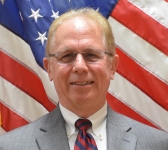
Lawrence A Presley
Department of Criminal Justice
Liberty University, USA -
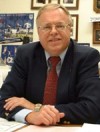
Thomas W Miller
Department of Psychiatry
University of Kentucky, USA -
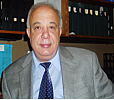
Gjumrakch Aliev
Department of Medicine
Gally International Biomedical Research & Consulting LLC, USA -
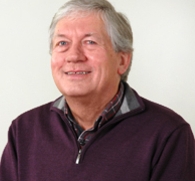
Christopher Bryant
Department of Urbanisation and Agricultural
Montreal university, USA -

Robert William Frare
Oral & Maxillofacial Pathology
New York University, USA -
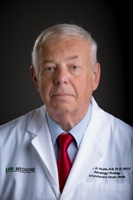
Rudolph Modesto Navari
Gastroenterology and Hepatology
University of Alabama, UK -
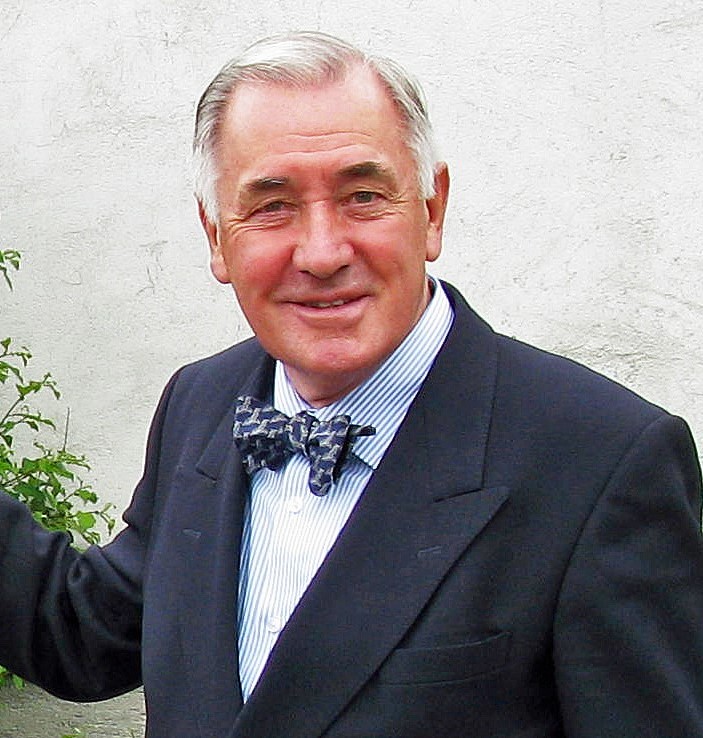
Andrew Hague
Department of Medicine
Universities of Bradford, UK -

George Gregory Buttigieg
Maltese College of Obstetrics and Gynaecology, Europe -

Chen-Hsiung Yeh
Oncology
Circulogene Theranostics, England -
.png)
Emilio Bucio-Carrillo
Radiation Chemistry
National University of Mexico, USA -
.jpg)
Casey J Grenier
Analytical Chemistry
Wentworth Institute of Technology, USA -
Hany Atalah
Minimally Invasive Surgery
Mercer University school of Medicine, USA -

Abu-Hussein Muhamad
Pediatric Dentistry
University of Athens , Greece

The annual scholar awards from Lupine Publishers honor a selected number Read More...




